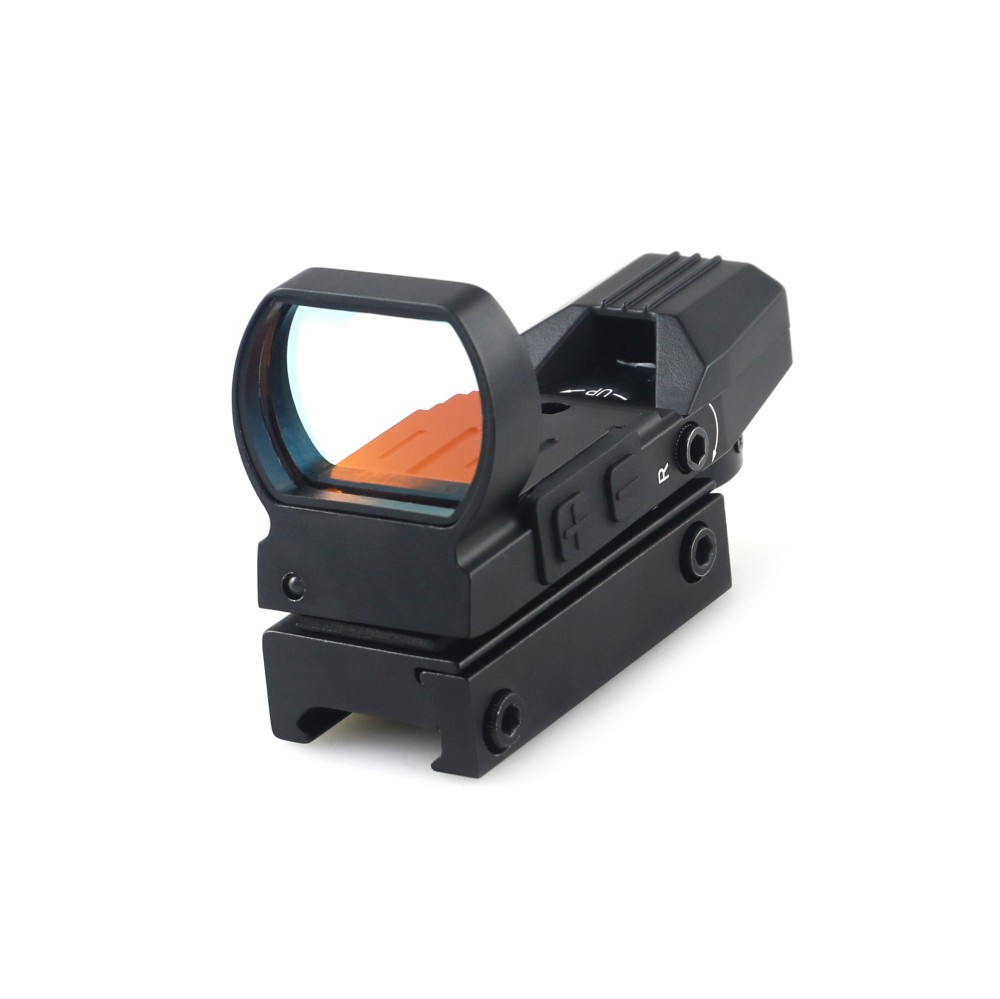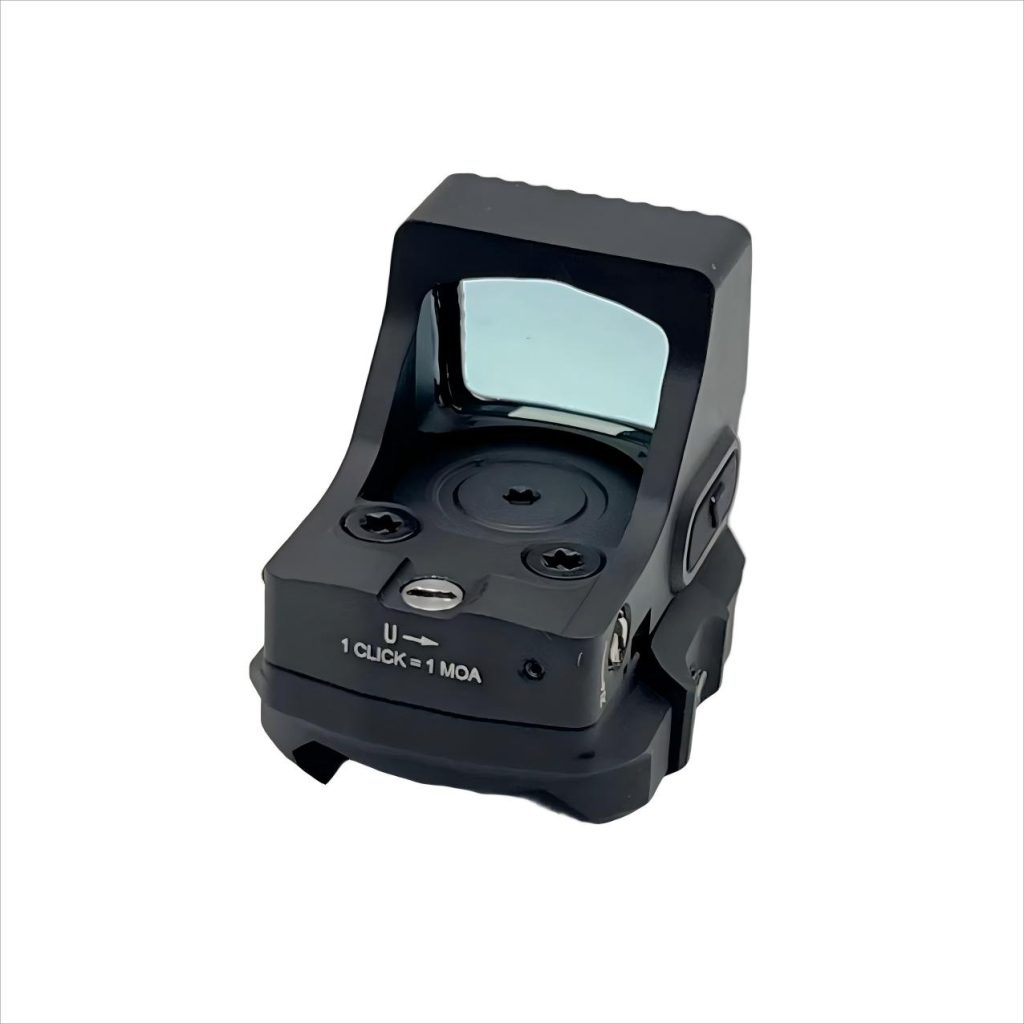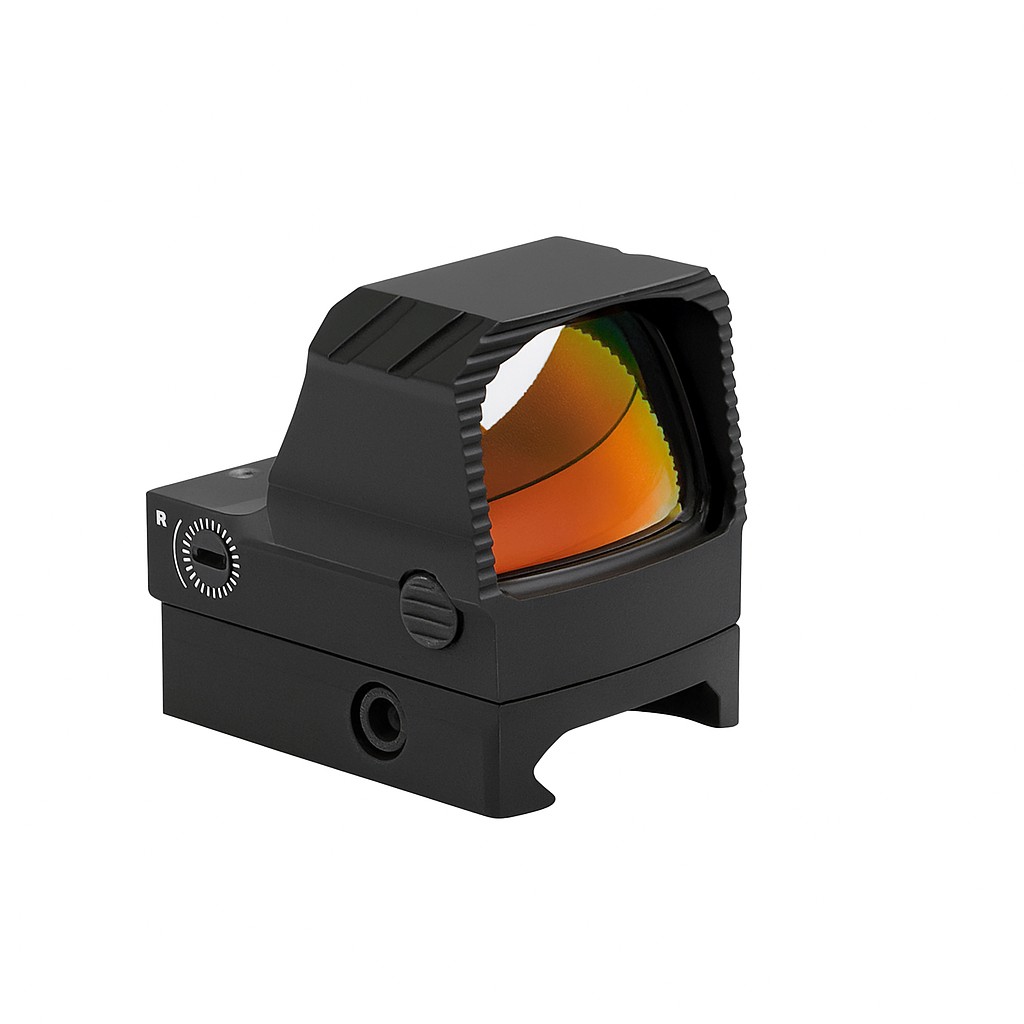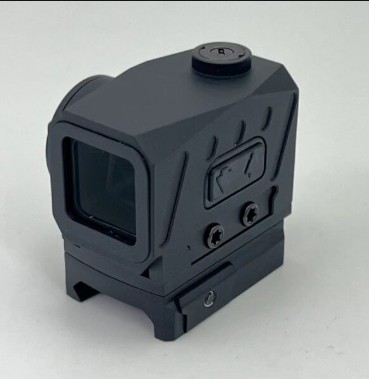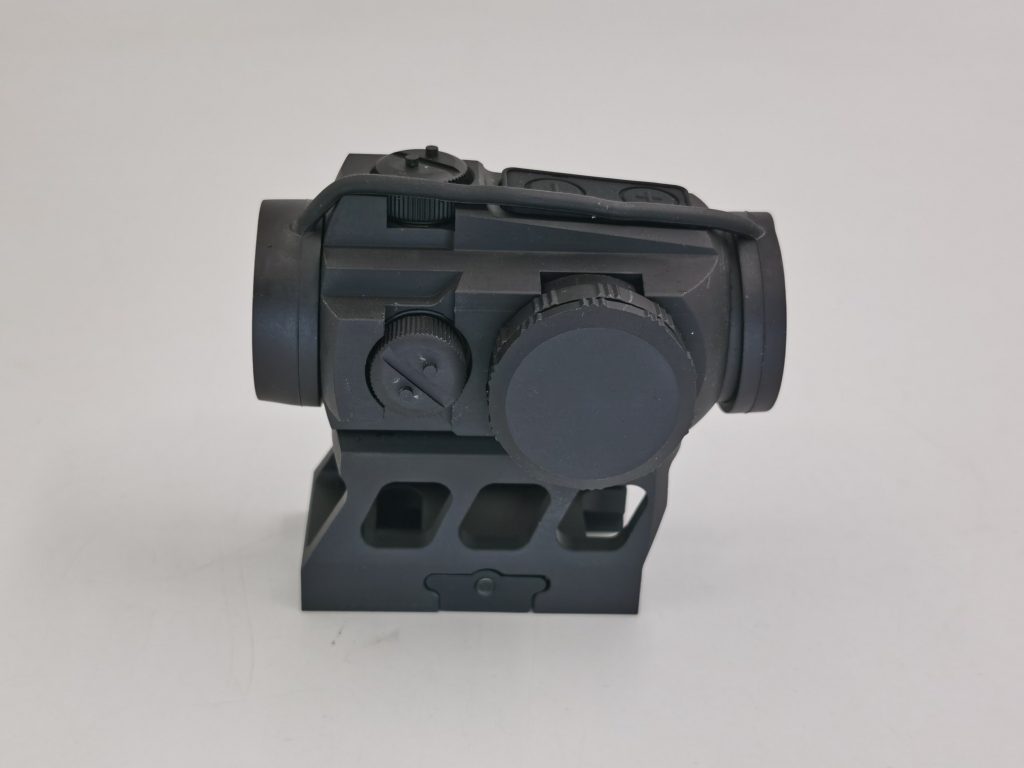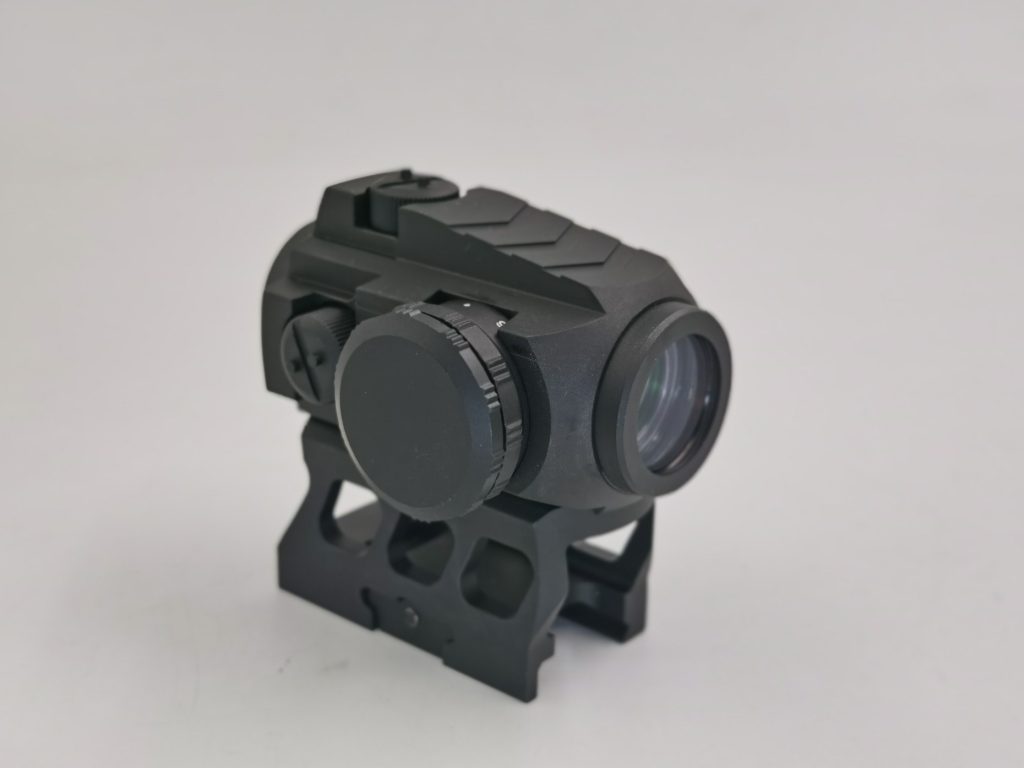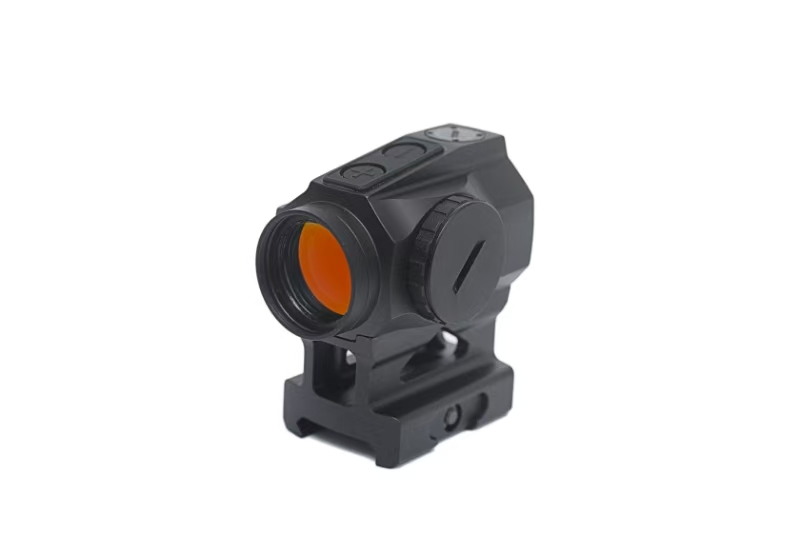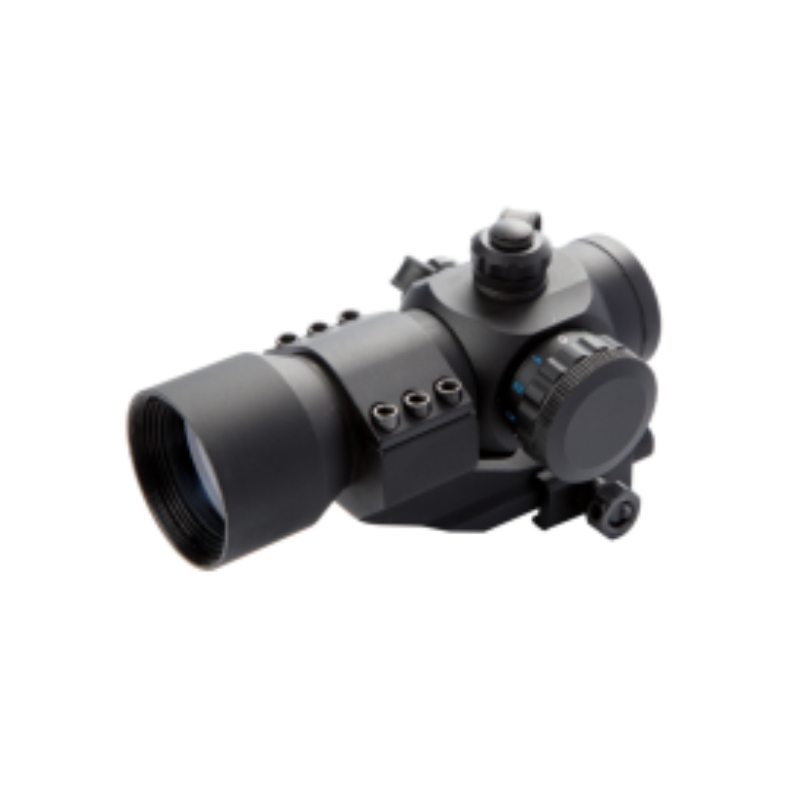Red dot sights have revolutionized aiming for a wide range of firearms, from pistols to rifles and shotguns. Their intuitive design allows for rapid target acquisition and improved accuracy in various shooting scenarios. However, several key factors significantly influence their performance, ultimately impacting the shooter’s effectiveness. Understanding these aspects is crucial for selecting the right optic for your needs.
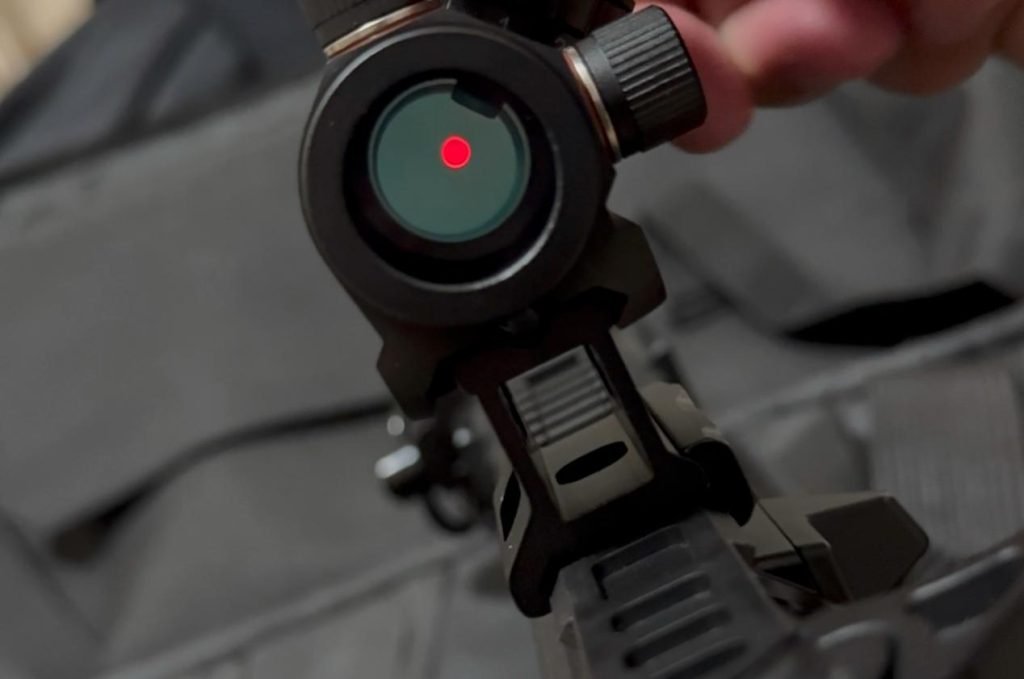
Factor 1: Reticle Clarity and Lens Quality
At the heart of any red dot sight lies its reticle. The clarity and definition of this illuminated aiming point are paramount for precise shooting. A crisp, well-defined dot allows the shooter to focus on the target without distractions or blurry edges obscuring the point of impact. Conversely, a fuzzy or distorted dot can lead to inconsistencies and reduced accuracy, especially at longer distances.
Achieving optimal reticle clarity hinges on the quality of the lens and the coatings applied to it. High-quality lens materials, often multi-coated, minimize distortion, chromatic aberration (color fringing), and ensure excellent light transmission. Anti-reflective (AR) coatings are crucial for reducing glare and reflections, providing a clearer view of the target in bright conditions. A study by OpticsTrade.eu, analyzing various red dot sights, indicated that models with high-quality, multi-coated lenses consistently received higher user ratings for clarity and image quality.
Furthermore, the design of the reticle itself plays a significant role. Dot sizes are typically measured in Minutes of Angle (MOA), with smaller MOA dots (e.g., 1-2 MOA) offering greater precision for longer-range shots, while larger dots (e.g., 3-6 MOA) facilitate faster target acquisition at closer ranges. Some red dot sights offer alternative reticle designs like circle-dots, which combine a central dot with a surrounding circle. These can be beneficial for quickly acquiring targets while still providing a precise aiming point. Specialized reticles might include bullet drop compensation (BDC) markings for specific calibers and distances. The choice of reticle design depends heavily on the intended application, whether it’s competitive shooting, hunting, or tactical use.
In conclusion, the clarity and quality of the reticle and lens are fundamental to a red dot sight’s performance, directly influencing the shooter’s ability to aim accurately and efficiently.
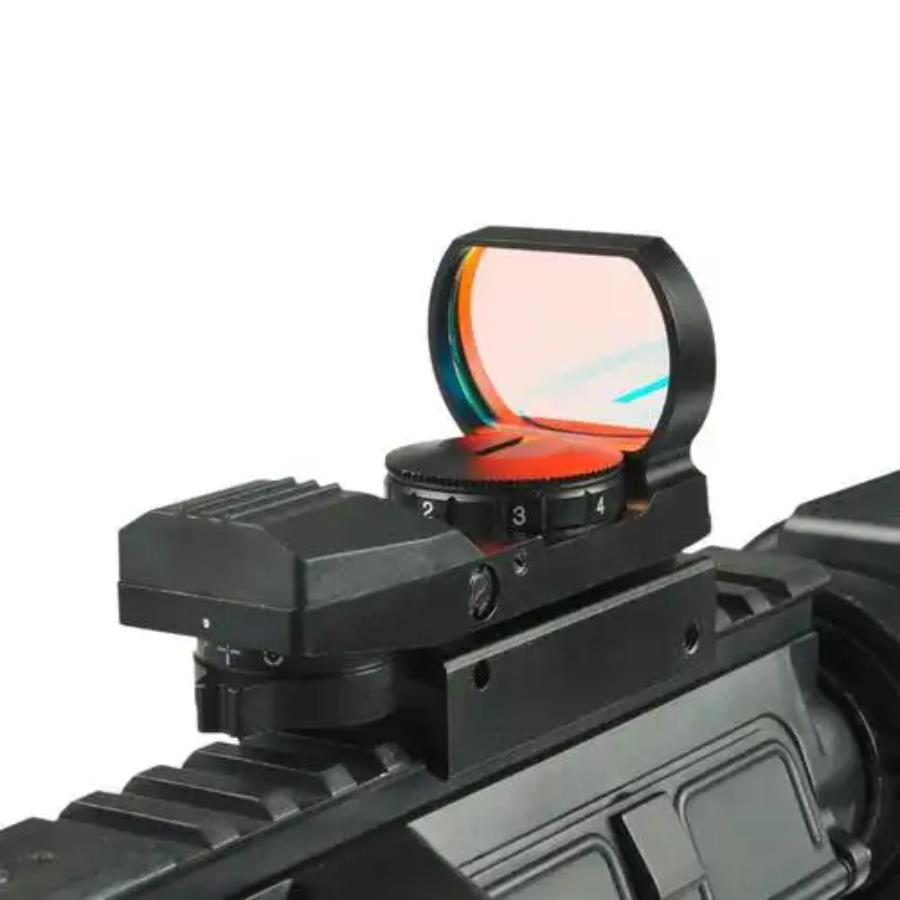
Factor 2: Mounting System and Zeroing Stability
A red dot sight, no matter how optically excellent, is only as effective as its connection to the firearm. The mounting system plays a critical role in ensuring a secure and repeatable zero. A loose or unstable mount can lead to shifts in the point of impact, rendering the optic unreliable. Various mounting standards exist, with Picatinny rails being the most prevalent due to their modularity and widespread adoption. Direct mounts, specific to certain firearm models, can offer a lower profile and potentially enhanced stability.
The importance of a stable mount cannot be overstated, especially under the stresses of recoil. Each shot imparts force on the optic, and a poorly secured mount can allow the sight to move, even minutely. Over time, this can lead to a significant shift in zero. High-quality mounts are typically constructed from durable materials like aluminum and feature robust clamping mechanisms to prevent movement. For instance, tests conducted by firearm accessory manufacturers often involve subjecting mounted optics to thousands of rounds to assess zero retention. Optics mounted with high-quality, properly installed mounts consistently demonstrate minimal to no zero shift.
Complementing a stable mount is the ease and precision of the zeroing process. Modern red dot sights often feature user-friendly adjustment mechanisms, typically in the form of capped or exposed turrets with audible and tactile clicks representing specific MOA or Miliradian (MIL) adjustments. The ability to precisely adjust the reticle to align with the firearm’s point of impact at a known distance is crucial for accuracy. Common zeroing distances include 25 yards and 100 yards, depending on the intended use. A 25-yard zero can be a practical starting point for many applications, offering a relatively flat trajectory within typical engagement ranges. A 100-yard zero is often preferred for rifle applications where longer shots are anticipated. Advanced red dot sights might even incorporate digital zeroing systems or offer multiple zero profiles for different ammunition or firearms.
Ultimately, a reliable mounting system coupled with precise and easy-to-use zeroing calibration technology ensures that the red dot sight consistently delivers accurate results.
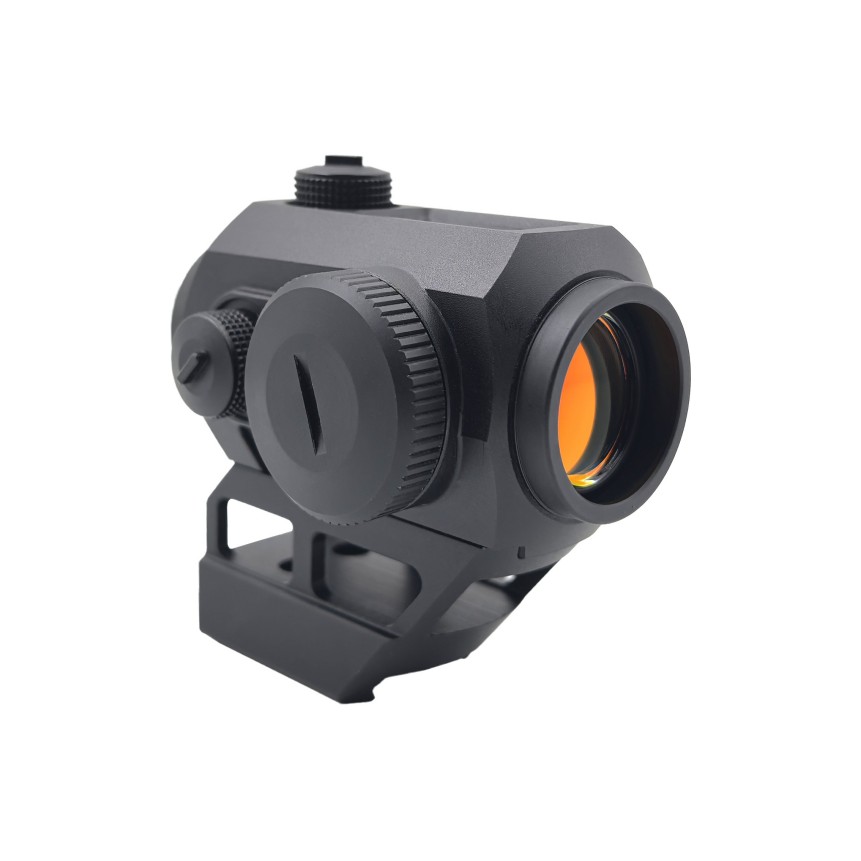
Factor 3: Brightness Adjustment
The versatility of a red dot sight is significantly enhanced by its ability to adapt to varying ambient light conditions. The brightness adjustment feature allows the shooter to optimize the reticle’s intensity for optimal visibility against the target. In bright daylight, a dim reticle can be difficult to see, while in low-light conditions, an overly bright dot can bloom or obscure the target.
A wide range and fine granularity of brightness settings are essential for optimal performance across different environments. High-quality red dot sights often offer numerous brightness levels, allowing for precise adjustments. For example, some optics may feature 10 or more distinct brightness settings. This range should include settings bright enough to be clearly visible against a sunlit background and very dim settings for use in low-light conditions or with night vision devices (NVGs). Dedicated night vision compatible settings are crucial for tactical applications, ensuring the reticle is visible through NVGs without causing excessive bloom or haloing.
User reviews often highlight the importance of having a sufficient range of brightness settings, with users praising optics that perform well in both bright and low-light scenarios. The ability to quickly and easily adjust brightness, often via buttons or dials, is another critical aspect that contributes to the overall performance and usability of a red dot sight.
Factor 4: Mechanical Design Features
The internal and external construction of a red dot sight directly impacts its durability, longevity, and overall performance. The materials used play a crucial role in these aspects. Aircraft-grade aluminum alloys are commonly employed for the main housing due to their excellent strength-to-weight ratio and resistance to corrosion. Some budget-friendly options might utilize polymer components, which can reduce weight but may compromise long-term durability under harsh conditions.
Proper sealing is essential for protecting the internal components from environmental factors such as water, dust, and fog. A well-sealed optic ensures reliable operation regardless of weather conditions. Similarly, shockproofing is a critical feature, especially for firearms that experience significant recoil or are used in demanding environments. Robust internal construction and secure component mounting prevent damage and maintain zero under impact. Manufacturers often specify the level of shock resistance their optics can withstand, often measured in G-forces. For instance, some tactical-grade red dot sights are rated to withstand thousands of Gs.
Battery life and power efficiency are also significant mechanical design considerations. Red dot sights rely on batteries for illumination, and the lifespan of these batteries directly impacts the optic’s usability. Modern red dots often employ efficient LED emitters and power management systems to maximize battery life, with some boasting tens of thousands of hours of continuous use on a single battery. Features like automatic shut-off after a period of inactivity further contribute to power conservation.
The level of durability required often depends on the intended use. A red dot for competitive shooting might prioritize lightweight design, while a duty optic for law enforcement or military applications will prioritize ruggedness and reliability above all else.
Therefore, the materials used, sealing, shockproofing, and battery efficiency are all integral mechanical design features that significantly influence a red dot sight’s long-term performance and suitability for different applications.
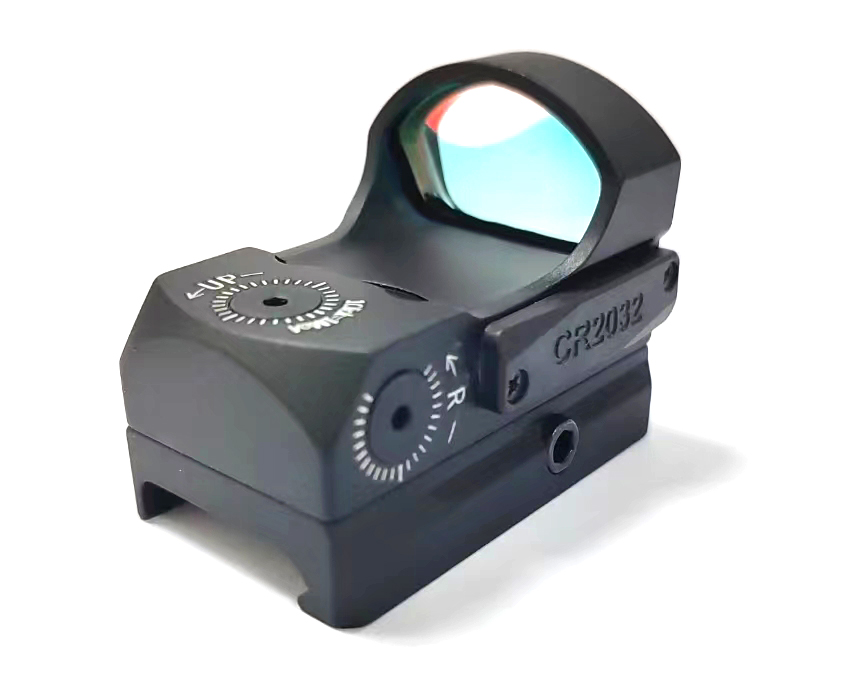
Factor 5: Parallax and Eye Relief
Understanding parallax and eye relief is crucial for maximizing the accuracy and ease of use of a red dot sight. Parallax refers to the apparent shift in the reticle’s position relative to the target when the shooter’s eye moves off the optical axis. While true parallax-free optics are theoretically ideal, in practice, most high-quality red dot sights are designed to have very low parallax within a reasonable range of eye positions. This means that even if the shooter’s eye is not perfectly centered behind the optic, the point of aim remains consistent with the point of impact.
The potential impact of parallax on accuracy increases with distance. A red dot with significant parallax can lead to missed shots, especially at longer ranges, if the shooter’s eye position varies. Therefore, opting for red dot sights advertised as “parallax-free” or “low-parallax” is generally recommended, particularly for applications where precision is paramount. Reputable manufacturers often provide specifications regarding the amount of parallax their optics exhibit at various distances.
Eye relief, on the other hand, refers to the distance between the rear of the optic and the shooter’s eye where the full field of view is visible. Red dot sights are known for offering virtually unlimited eye relief, allowing the shooter to acquire the target quickly and comfortably without needing to maintain a precise head position. This contributes significantly to faster target acquisition and enhanced situational awareness, as the shooter can maintain focus on the surrounding environment while aiming.
However, the concept of “long” or “short” eye relief, more commonly associated with magnified optics, can still have subtle influences on red dot usage. A slightly longer eye relief can provide more flexibility in mounting positions and may be beneficial for accommodating different shooting stances or the use of rear-mounted accessories. Conversely, a very short eye relief is generally not a concern with red dots due to their inherent design. The relationship between parallax and eye relief is less direct than with magnified scopes, but the goal in red dot design is to minimize parallax across the usable range of eye relief. When choosing a red dot sight, it’s advisable to prioritize models with minimal parallax to ensure consistent accuracy, while the generous eye relief characteristic of red dots generally contributes to ease of use and faster target acquisition.
In conclusion, the performance of a red dot sight is a multifaceted issue influenced by several critical factors. Reticle clarity and lens quality form the foundation for accurate aiming, while a secure mounting system and precise zeroing ensure consistent point of impact. Adjustable brightness allows for optimal reticle visibility in diverse lighting conditions, and robust mechanical design features contribute to the optic’s durability and longevity. Finally, understanding and minimizing parallax, coupled with the inherent advantage of unlimited eye relief, enhances both accuracy and ease of use. By carefully considering these five key factors, shooters can make informed decisions and select a red dot sight that best suits their specific needs and maximizes their shooting potential.

